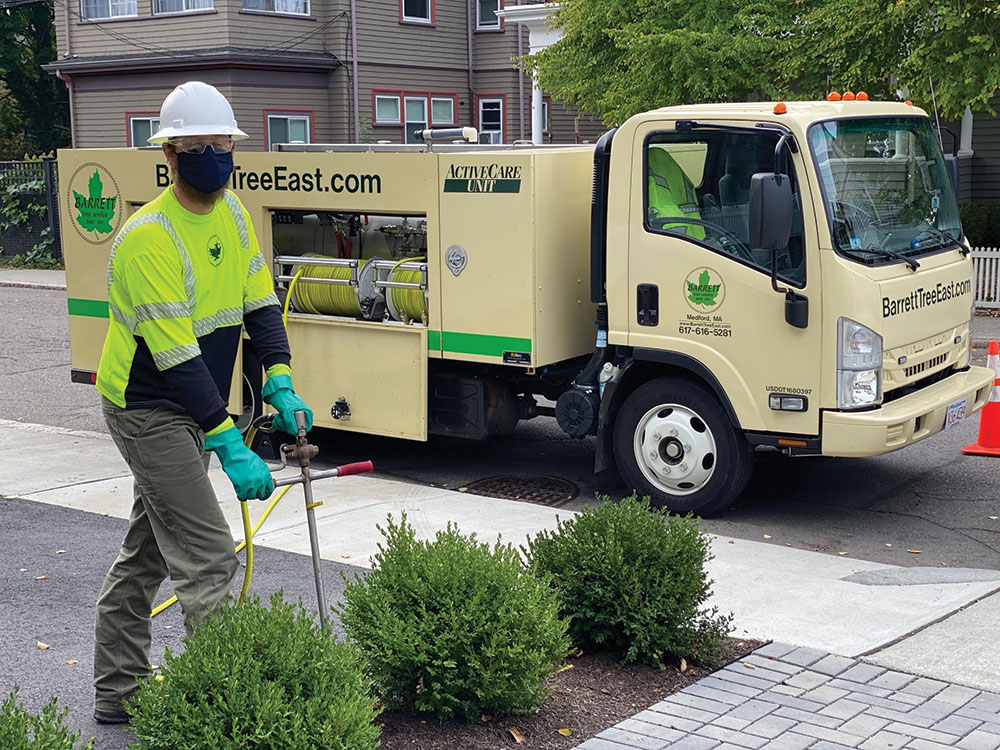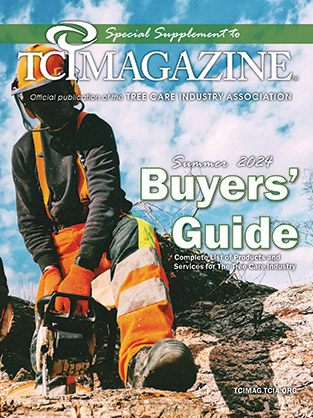Increasing Your PHC Sales: the Bookends

What a long, strange trip it’s been. I think that old Grateful Dead line certainly sums up 2020. In talking to many colleagues across the country, I’ve found this will certainly be a year that in many ways they want to forget. While many sectors of the service industry are closing their doors, we are fortunate to be in an industry that is able to continue to operate during this ongoing pandemic.
As we were waiting on the edge of our seats in March as the new reality set in, with spouses working from home and schools going remote, I wondered, would our clients cancel their services? Would they still see the value in caring for their landscapes? Fortunately, the phone never stopped ringing, and we were able to have a sense of normalcy in the grind we all enjoy during the busy season, socially distanced, of course. Hopefully this was the case for you as well. Most arborists I have spoken with have healthy backlogs that go well into the winter months.
The most common question I hear from other companies that offer plant health care, or PHC, is, “How do we increase our sales?” The first thing I ask is, “Are you really looking for that?” The common response is, “Of course we are.” When you get the call from a prospective client who says the magnolia has black stuff on its leaves, sure you are. What about the other calls?
Example: A prospective client calls to have a Certified Arborist look at a river birch that is encroaching on the house (they never plant those trees too close to houses, do they?). Seems like a very straightforward appointment. You arrive, meet with the client, look at the tree, recommend some pruning that will be an ongoing issue or maybe a removal and move on. Three days later, they get a proposal. End of story. Should it be?
You need to program yourself to look for PHC at every property. Someone has invited you to come on their property and give them advice. Take advantage of the opportunity. Before you close the book on the property, say something like, “I will get my recommendations written up and you should receive them in a few days. While I am here, I am going to take a walk around to do a general assessment. You may see some plant-health-care recommendations on the proposal as well when you receive it.”
Ninety-nine percent of the time, you will see something on that walk around. If the client joins you, even better. At that point, you know they are interested in what you might find, and you will find something, whether it be lace bug, scale, fungal issues – the list goes on and on.
Many clients will not know they have an issue and, more important, most are happy to have the inspection and solution presented. Most will want the river birch addressed and the other PHC issues you find resolved as well. Some will not, and that’s OK, too. At the end of the day, we are only making recommendations. The clients can decide if they want to address them or not.
Years ago, we had a prospective client call who had an elm tree deep in their backyard. We were called in after the tree started to flag due to Dutch elm disease. The client had another tree company that did annual maintenance pruning on the trees and shrubs at the front of the house. We explained our approach to preserving elm trees, which includes the use of macro-infusions. While macro-infusions were no guarantee, this treatment may have spared the tree.
Unfortunately, due to the progression of the fungus, this elm needed to be removed. The client said he was never told about the elm tree or its predisposition to the fungus. I would assume the sales arborist never went further than what he thought was the sales side of the house. While he had the annual pruning sale, he missed out on the elm injections that would have been done every three years and, even more important, may have saved the tree. Had he at least offered the infusion when the tree contracted the disease, he would have had it on record.
We took over the account, and the client ended up signing up for our integrated pest management, or IPM, program with consistent monitoring. He really valued the PHC side of our recommendations, as well as the annual pruning we now did for him. I am not sure the other arborist ever asked him or even looked for PHC opportunities on the property.
Like anything, you must be careful not to take this to the extreme. No one wants the meeting with their arborist to resemble a trip to one of those unscrupulous auto-
service franchises where the free safety inspection after the oil change turns into thousands of dollars’ worth of recommendations. If you were invited on the property to look at the small river birch to prune off the house and the proposal is a 10-line item PHC proposal, you may want to back off a little.
If you run into a legitimate PHC nightmare, look for the imminent plant-health issues and start there. Be upfront with the client and let them know you encountered more than you initially thought you would. In most cases, you will be able to show them the issues, so at least they will know you looked. It’s not the phantom brake-
rotor turn that you can’t go into the garage to see because of insurance reasons.
Seasonal changes
There is a lot in between the beginning and the end of the season that will help build and maintain your PHC numbers. I want to talk about the end of the season a little now. In the Boston area, our season ends around Thanksgiving, or at least I like to be wrapped up or close to wrapped up by then. For many companies, the rush is then on. It seems they cannot get the renewals out fast enough, offering pre-pay discounts if clients sign on for another season before the holidays.
I have always been a little leery of these big discounts. If they are offering a 30% discount on last year’s program, how badly did you get screwed last year? Some companies in the Boston area are doing auto-
renewal. This concept is simple; they assume you want the program unless you tell them otherwise. This makes me nervous on many levels. We do not offer this. Working in a state as restrictive as Massachusetts, I am surprised this is even legal, but it is.
We try to do as many property reviews this time of year as we can. The arborist will receive a stack of their PHC renewals, and they will visit as many as they can to confirm all kinds of things such as tree locations, pricing and, most important, does what we did last year make sense to do this year. It is not a race to get the renewals out. We want to be sure our recommendations are current.
I cannot tell you how many clients we have gained because their trees are loaded with elongate hemlock scale. They always say the same thing, “I don’t understand it, company X has been injecting the soil with imidacloprid for the past 10 years, why isn’t it working?” The trees probably had adelgid at one time, and the arborist just kept sending out the renewal. If the arborist had done a review, he/she would have seen the scale and known their approach needed to change. This would have resulted in an increase in PHC, and the client and their trees would have been better served.
These reviews help to drive PHC sales. This is an active approach. We do not sit back, push a button and wait to get the renewals back. We want to see how we are doing, see how the plants are responding and make adjustments as needed. This is what being an arborist is all about. It also sets us apart, as I do not think many other companies are doing this.
In reality, we cannot look at every property every year; this would be too daunting. The arborists have a revolving schedule that allows them to get out to the properties every other year or every three years. We also have brought in other PHC technicians with the right skills to help with this process. When the clients see you care enough to take stuff off the renewals because you have done the work and it is not needed anymore, they trust you.
There is always more to do. I don’t think I have seen many recommendations go down much in value, as the clients’ PHC budgets stay consistent year to year. We may focus more on soil tests, etc., when we have a particular insect problem cleared up. We definitely gain client referrals from this, as, again, it separates us from other companies.
Conclusion
What I have always enjoyed about plant health care is that it is always changing. It takes boots on the ground. We need to identify the problem, provide solutions and follow up after these solutions have been offered. No two properties are the same and no two years are the same. I hope that rings true as far as 2020 is concerned.
Phillip Perron is a Massachusetts Certified Arborist (MCA), a Massachusetts Licensed Pesticide Applicator and an ISA Certified Arborist with Barrett Tree Service East, Inc., an accredited, 13-year TCIA member company based in Medford, Mass.
Listen to his presentation on “Plant Health Care – Setting Yourself Apart” at TCI EXPO 2019 in Pittsburgh, Pennsylvania.




